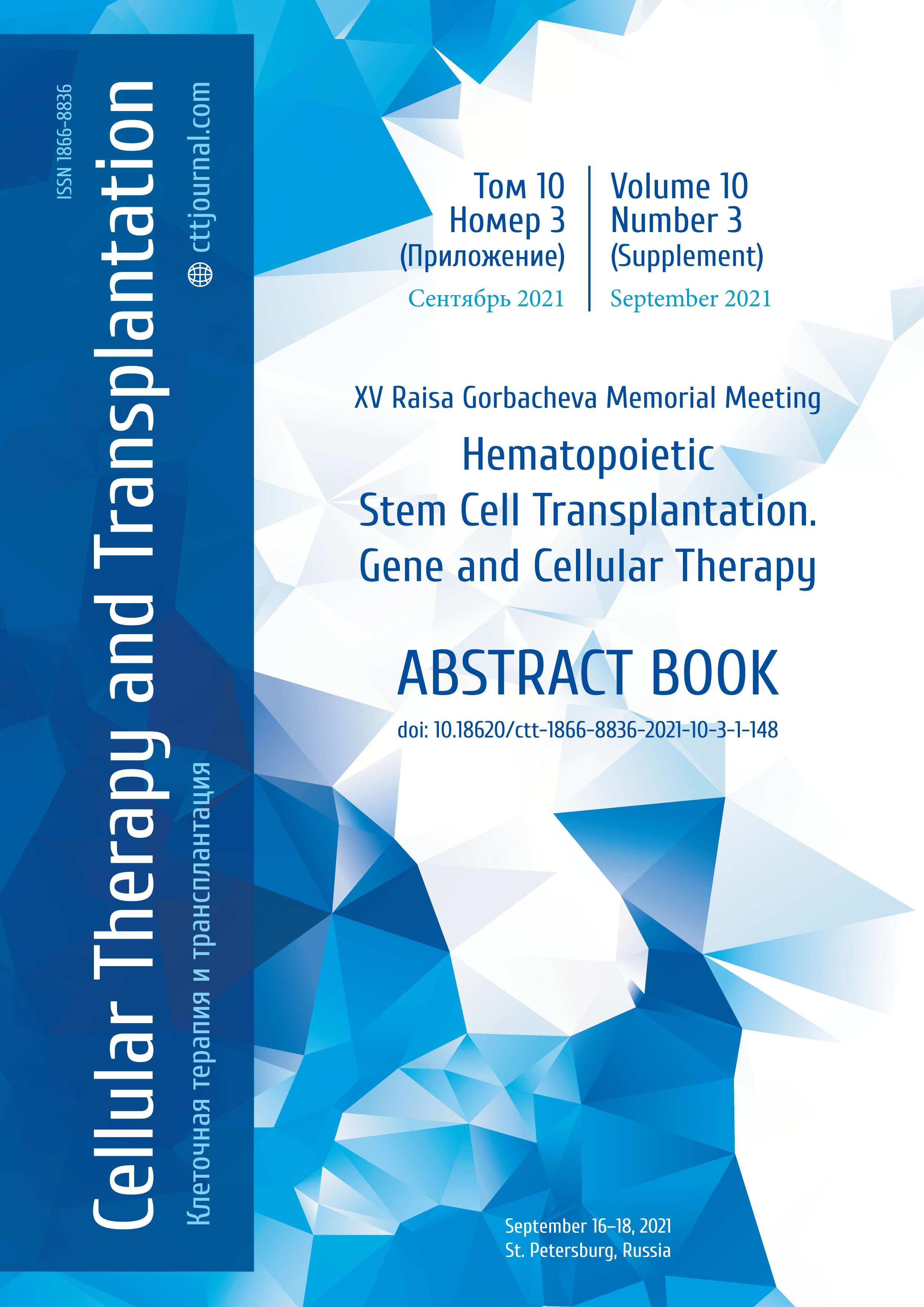CM-02. Results of allogeneic hematopoietic stem cell transplantation in children and adolescents with high-risk myelodysplastic syndrome
Anna A. Osipova, Tatyana A. Bykova, Varvara N. Ovechkina, Anastasia S. Borovkova, Olesya V. Paina, Polina V. Kozhokar, Kirill A. Ekushov, Svetlana V. Razumova, Alexander L. Alyanskiy, Elena V. Morozova, Elena V. Babenko, Tatyana L. Gindina, Elena V. Semenova, Alexander D. Kulagin, Ludmila S. Zubarovskaya
RM Gorbacheva Research Institute, Pavlov University, St. Petersburg, Russia
Correspondence:
Dr. Anna A. Osipova, e-mail: md.annarats@gmail.com
Summary
Myelodysplastic syndromes (MDS) are heterogeneous clonal disorders, which include low and high-risk groups. Allogeneic hematopoietic stem cell transplantation (allo-HSCT) is the method of choice for treatment of MDS and leads to cure of the disease. The aim was to evaluate the effectiveness and identify factors influencing the outcome of allo-HSCT in children and adolescents with high-risk MDS.
Patients and methods
The study included 41 patients (pts) with following MDS types: refractory anemia with excess blasts (RAEB) – 30 pts (73%); refractory anemia with excess blasts in transformation (RAEB-T) – 3 pts (7%); acute myeloid leukemia from MDS (AML from MDS) – 8 pts (19.5%). The diagnosis was established in accordance with international criteria. The median age was 9 years (1 month-18 years). Gender distribution was as follows: 22 boys and 19 girls. Based on pre-transplant cytogenetics, patients with monosomy 7 and/or complex karyotypes (n=19, 46%) were considered high-risk and pts with normal or other abnormal karyotypes (n=22, 54%) were considered low-risk. In our center 50 children received allo-HSCT between 2002 and 2020 (single transplantation in 41 cases; second transplantation was administered in 9 cases). Therapy prior to allo-HSCT was used in 34 patients (83%): high-dose chemotherapy – 17 pts (41%); hypomethylating agents – 15 pts (37%); without therapy – 9 pts (22%). The level of ferritin before allo-HSCT was assessed. The median time from diagnosis to allo-HSCT was 11 months (55-2586 days). Bone marrow (BM) was used in 27 pts (66%); peripheral blood stem cells (PBSC); in 11 cases (27%); combination therapy, in 3 pts (7%). Matched related donors were used in 4 pts (10%); haploidentical, in 9 cases (22%), and matched unrelated donors were used for 28 pts (68%). Myeloablative conditioning regimen (MAC) was used in 20 pts (49%); reduced-intensity conditioning (RIC), in 21 pts (51 %). For the GVHD prophylaxis we used cyclosporine A (CSA) – 21 pts (51%); tacrolimus –17 (42%), other – 3 (7%). Post-transplantation cyclophosphamide was used in 14 cases (34%); ATG, in 25 cases (61%).
Results
Five-year overall survival (OS) and event-free survival (EFS) were 50% and 43%, respectively. Median follow-up was 26 months (1-130 months.). Engraftment was achieved in 32 pts (78%). Median engraftment time was 17 days (12-33 days). Longer time interval between diagnosis and HSCT (p=0.029) and increased level of ferritin prior to allo-HSCT (p=0.030) affected OS in multivariate analysis. Increased level of ferritin prior to allo-HSCT was associated with lower EFS (p=0.024). The cumulative incidence of relapse was 33%. Transplant-related mortality was 37%. Reasons of death were as follows: primary graft failure (n=4); GVHD (n=2); infectious complications (n=7). Multivariate analysis demonstrated factors that were associated TRM. Among them were longer time interval between diagnosis and HSCT (p=0.013) and increased level of ferritin prior to allo-HSCT (p=0.05).
Conclusion
Allo-HSCT in children and adolescents with high-risk MDS provides long-term patient survival. Timely performance of allo-HSCT and chelation therapy are important factors influencing the results of allo-HSCT.
Keywords
Myelodysplastic syndrome, pediatric, refractory anemia with excess blasts, RAEB-T, allogeneic hematopoietic stem cell transplantation.


